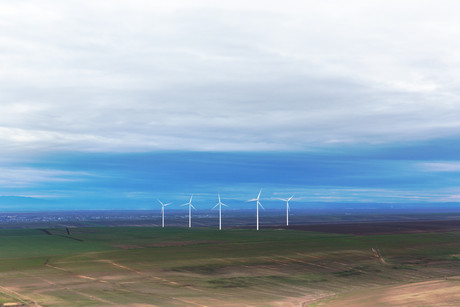Renewables inspire the need for greater digitalisation

In her latest blog post, Sofia Sauvageot, wind segment leader at GE Power Conversion, says that renewables are continuing to break records worldwide but there is still room for improvement.
Great strides have been made in the last decade in how we consume energy. In 2007, global renewable electricity generation capacity was at an estimated 240 GW, which at the time was a significant amount. Fast-forward to a decade later, and the reality is strikingly different. Today, countries across the globe are relying less and less on fossil fuels and are continuing to focus on powering the world through clean energy. The latest report from the International Energy Agency claims that a record 153 GW of green electricity was installed last year alone, which was more than the total power capacity of Canada.
Today, innovation is moving at breakneck speed. It took fossil fuels decades to take over the world, yet it took only 20 years for renewables when they overtook coal as the world’s largest energy source last year. In order to become a viable and competitive energy source, renewables have spurred on enormous technological advances.
In the solar industry, new innovations are focused to increase equipment efficiency to extract more power out of the sun. One of these latest innovations comes from the new material silicon carbide (SiC). For example, a silicon carbide inverter gives an additional 1% power conversion efficiency compared to today’s standards, and while this may not seem like much at first glance, for a 100 MW solar plant, 1% more efficiency could mean more than $2.5 million worth of additional energy being produced over the plant’s lifetime.
Similar transformations are happening in the wind industry, where equipment availability is of paramount importance. The premium high availability requires high reliability of each single piece of equipment, as well as the entire system.
Growth in scale
Scale is also gaining momentum as the popularity of renewables continues to soar. Today, national governments as well as regional authorities are eyeing to support and leverage large-scale renewable farms to provide more affordable clean energy, as these super-sizing farms can unlock economies of scale and bring in significant infrastructure cost reductions.
As plants grow in size, new opportunities rise to improve efficiency at the farm level through system optimisation. Energy organisations should also look at solutions that allow a truly integrated approach.
Meanwhile, we have also seen the procurement processes move to an auction model — the government issues a call for tenders to procure a certain capacity or generation of renewables-based electricity. This new approach is providing privilege to large renewable farms that can then enjoy economy of scale out of larger installations. Driven by a more well-planned and transparent process, as well as more cost-effective renewable electricity production, the model is expanding worldwide. Emerging countries, such as Brazil, are among the first to launch this auction system.

The future
However, as the demand for power continues to increase globally, relying on a sole source of renewable energy does (unnecessarily) limit options. That’s why the current focus should be on using technology to combine multiple energy sources and tackling the overarching challenge of unpredictable energy output. Hybrid power generation really is the key to unlocking the power required for future generations, but this is not the only option. Through utilising digital technologies, operators can also manage multiple farms from a central location, helping to monitor performance concurrently and make data-driven decisions to optimise energy output while maximising revenues based on changing grid pricing conditions.
The use of the ‘digital twin’ — a powerful digital replica of physical assets — can allow operators to move to a predictive model of maintenance. This allows for the reduction of unplanned downtime and excessive maintenance costs. By comparing the digital twin to the asset at real time, it can warn of off-standard behaviour up to weeks in advance and prevent potential failures before they strike. This data-driven approach can thus increase efficiency and productivity, as well as reduce risks of plant shutdown.
In fact, the digital promise stretches farther and wider. From Henry Ford’s moving assembly line to Taiichi Ohno’s Toyota production system, now known as lean production, manufacturers globally have constantly strived to make their operations better. Today, the key to this is digital technology.
Renewables are expected to cover more than 60% of the increase in world electricity generation over the medium term, rapidly closing the gap with coal. While 2016 was an excellent year, there is still room for more work. Incremental gains can be achieved through asset optimisation, but as the future of renewables is inevitably marching towards a more sustainable hybrid and digital future, companies should make themselves ready to embrace the leap to ensure its continued vitality and long-term viability.
Reference:
- IRENA and CEM (2015), Renewable Energy Auctions – A Guide to Design, <http://www.irena.org/DocumentDownloads/Publications/IRENA_RE_Auctions_Guide_2015_1_summary.pdf>.
FieldComm Group announces unified device integration roadmap
An updated FDI technology specification aims to pave the way for single device integration for...
Newmont deploys 'world first' 5G teleremote dozer fleet at Cadia mine
The capacity and predictability of private 5G boosts mining construction fleet efficiency.
OPC Foundation releases 'Secure by Demand' document
The OPC Foundation has released guidance for operational technology owners and operators when...











